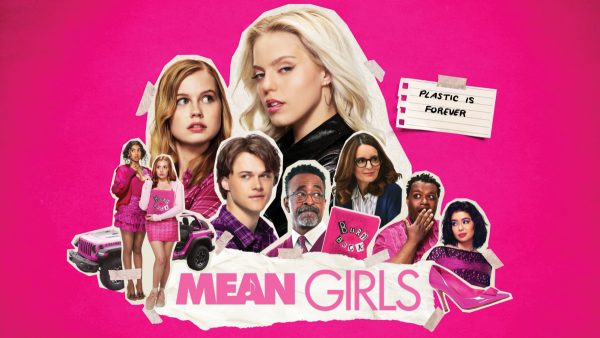It’s June 23rd, 1972. Title IX was just passed. Title IX fights for equal rights in athletics allowing for female athletes to play their sport and fights against sexual discrimination. While tons of people were elated, that didn’t stop some from feeling against it.
Before Title IX, female athletes often were not taken seriously. This was as a result of myths that circulated all of which, by today’s standards, would be considered outlandish and simply unrealistic. One of the most notable and equally mind blowing myths used to justify a woman’s incapability to engage in athletics was one about how a woman’s uterus would shift and loosen during movements such as running, thus impacting her reproductive ability. Get this! Doctor’s backed it up, too. This was later disproved.
“Many did not want women competing in sports since it was once believed to have impacts on sexual reproduction,” Jennifer Wartel of Sacred Heart University wrote in a report. “This has been proven false, as many female athletes have left competition to have children.”
In spite of the obvious roadblocks that stood in the way of female athletes, there were still many girls that actively fought for their chance to play. Former student of Lincoln High School, Becky Martin was part of the group of girls that first got the chance to compete in their sports.
“Our letters that we put on our letter jackets were rather small in size compared to the boys,” former Lincoln student Becky Martin said, she was a high school student when Title IX was introduced. “To top it off, they printed the word ‘Girls’ on it like we were second class compared to the boys. The boys’ letters didn’t have ‘Boys’ printed on them. Also, the local newspaper didn’t cover girls sports much at all. I remember I wrote to the public mind on this.”
As soon as Title IX was passed, schools across the country had to start hustling and forming even more sports teams for the girls. In Martin’s case, her high school expanded their sports options from swimming and track and field (both introduced two years prior to Title IX), to others such as gymnastics, volleyball, and tennis. However, even then, there were still stigmas and myths floating around the female body and how it would react to sporting events.
“A note here about track,” Martin said. “The longest event was the 880 yard run. They thought girls might hurt their reproductive organs or weren’t strong enough to run further.”
Another belief was that women were just biologically weaker in terms of strength and speed compared to men. That was also disproven; there is quite a large overlap for both genders.
According to Women’s Sports Foundation, “girls in sports may experience bullying, social isolation, negative performance evaluations, or the loss of their starting position. During socially fragile adolescence, the fear of being tagged ‘gay’ is strong enough to push many girls out of the game.”
Stereotypes, along with biases and prejudices in general, have contributed to the lack of representation of female athletes in the sports community. With biological myths, straight-up mind boggling claims of truth, female athletes continue to be faced with society’s perception of women.
“One of the ways that stereotypes impact us now are that we’re just ‘girls,’ so ‘it can’t be as interesting.’” Sophomore Layne Parker, an athlete on Bellevue East’s girls basketball team said.
According to the Olympics, women were allowed to compete for the first time in the 1900’s. Those sports were tennis, sailing, croquet, equestrianism, and golf. However, this is not as great as it may seem. These sports were specifically chosen so that it would be easy to accentuate the “ideal” female body parts. Things like uniforms, skills, and even attitudes/personalities were often sexualized.
“Most of the time however, these stereotypes and many others are completely irrelevant and don’t define women athletes. We can still win games, get scholarships, and for some, go professional!” Parker said.
Some students at Bellevue East noted a relatively noticeable difference in the amount of viewership in the audience for girls and boys basketball teams. Boys basketball games typically have a larger turnout than the girls basketball team.
“I definitely believe the boys have more people come out to their games than the girls,” Parker said. “Even though our girls basketball team has been to state two years in a row, people still don’t want to show support, or they just can’t.”
Despite Title IX, there is still inequality today, both in professional and recreational athletics. In fact, in the sports basketball, golf, baseball, soccer, and tennis, male athletes are paid more than their female counterparts.
According to Human Kinetics, in May of 2021, the highest paid female athlete was Serena Williams, who made $94,253,246. In contrast, Novak Djokovic earned $148,092,073. That’s a 36.35% difference, despite Williams entering the professional sports industry in 1995 at 14, and Djokovic entering in 2003 at age 20.
One way that people today, not just students, can continue to push for equality would be to utilize the media. Popular platforms like Instagram could be a good place to start, but essentially any media would work.
“I think the Omaha World Herald does a great job promoting girls basketball. Peter Burtnett does a great job at promoting girls basketball.” Assistant coach of Bellevue East’s girls basketball team Eric Lenear said.
According to UNESCO (United Nations Educational, Scientific, and Cultural Organization), 40% of all sports participants are women. However, only 4% out of all media coverage actually covers women’s sports.
“Media coverage of girls sports promotes equality by just covering girls and boys sports in a similar fashion,” Martin said. “When coverage is similar, it shows that both boys and girls sports are important. Equitable funding and coaching are huge in keeping all sports equal.”
There are other ways to show support aside from the media. In fact, just actively working to encourage female athletes to pursue their goals can go a long way as well.
“We have to create a good environment,” Parker said. “Some girls are nervous to try out for teams because of what has been said about them in the past, but if we actually want more people to show up and be part of East athletics, we have to show that we care about our sports.”
![Ensuring safety. If given a reason, the school resource officer reserves the right to search a student’s belongings. As a safety precaution, SROs wear gloves when searching a student’s backpack. “So [for a] backpack search, if we have to do a backpack search, we have to have a few things. We have to have existent circumstances, probable cause, or we have to have reasonable articulable suspicion which we would request from the school administrator or teacher to search a backpack,” School Resource Officer Jonathan Hobbs said.](https://thechieftainspear.org/wp-content/uploads/2024/05/hobbs-photo-Medium-450x600.jpeg)










![Stay focused. With a concentrated gaze, sophomore Zoey Howard waits to get the ball from her teammate. Howard believes that female athletes can continue to be leaders and great role models for younger girls to look up to. “I am aware [that female athletes are paid less than male athletes] and it makes me mad because women work just as hard as men; we can continue to push for more equality by putting ourselves out there,” Howard said.](https://thechieftainspear.org/wp-content/uploads/2024/02/zoey-howard-for-web.jpg)

